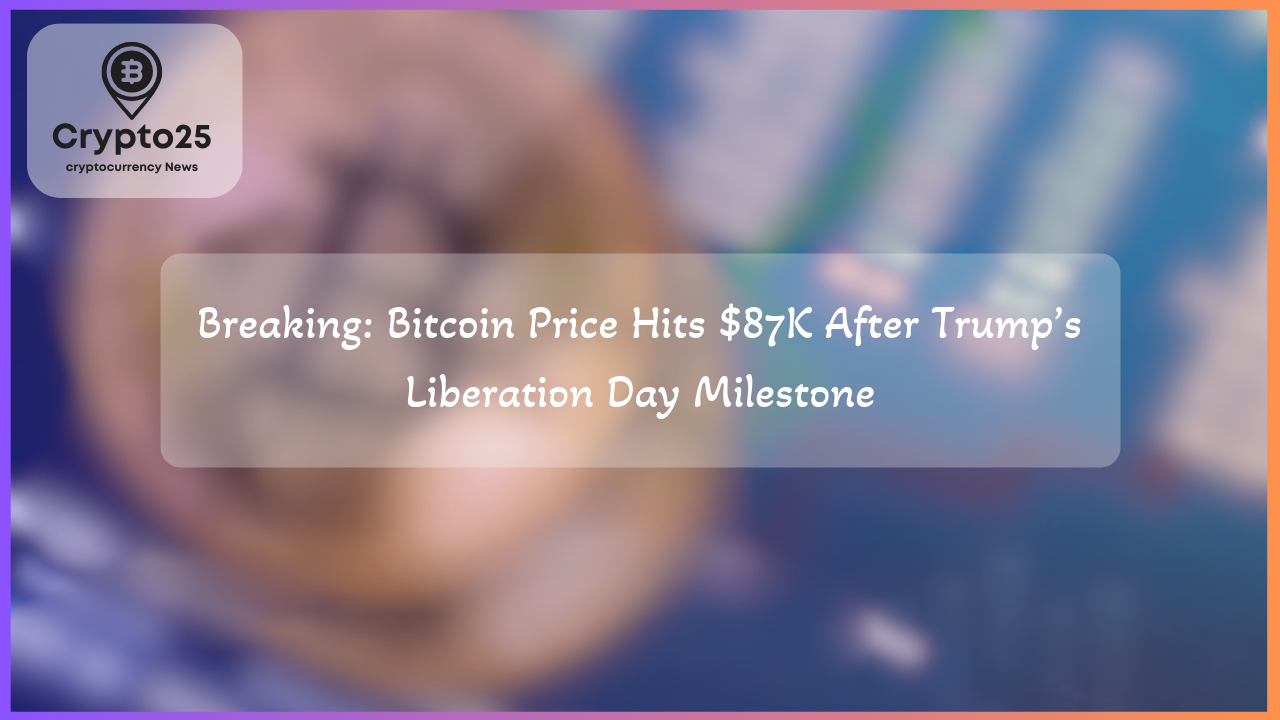
Bitcoin’s recent surge past $87,600 during Asian trading hours marks a significant milestone in its journey as the world’s leading cryptocurrency. As global inflation concerns mount and traditional financial markets face heightened volatility, Bitcoin continues to emerge as a preferred asset for institutional and retail investors. This renewed interest highlights Bitcoin’s evolving role in global finance.
### Why Bitcoin’s Price Surged Beyond $87,600
The Bitcoin price saw a significant climb to $87,600, its highest since April, signaling renewed investor confidence. This uptick is largely attributed to rising global liquidity driven by an expanding M2 money supply and the weakening U.S. dollar. M2 money supply, which includes cash equivalents like savings accounts and money market funds, has played a vital role in loosening financial conditions. As investors seek alternatives to hedge against inflation, Bitcoin is increasingly perceived as a “hard asset,” akin to gold.
Monday’s trading volume exceeded $24.5 billion, outpacing most non-stablecoin cryptocurrencies. Bitcoin’s 3.6% rally underscores a shift in sentiment among market participants, with analysts noting capital flows into both Bitcoin and gold as alternatives to fiat-backed assets. Notably, gold prices also hit record highs of $3,400 per ounce during Asian trading hours, signaling broader market trends favoring hard assets as inflation fears persist.
| Title | Details |
|---|---|
| Bitcoin Price | $87,600 |
| Gold Price | $3,400 per ounce |
| Trade Volume | $24.5 Billion |
### The Role of Inflation and Global Policies in Bitcoin’s Rally
Macroeconomic factors are playing a critical role in fueling Bitcoin’s rally. The U.S. Dollar Index (DXY) recently dropped to its lowest level since February 2022, falling to 98.5 after speculation about the potential removal of Federal Reserve Chairman Jerome Powell. This sharp decline in the dollar has increased Bitcoin’s appeal, as investors pivot away from fiat to digital stores of value.
Additionally, geopolitical developments such as the recent U.S. “Liberation Day” tariffs have created volatility in traditional asset classes, prompting investors to explore Bitcoin as a hedge. The Fear & Greed Index, a key sentiment indicator, recently reflected a turning point as market participants moved funds into Bitcoin to capitalize on its perceived growth potential when compared to gold or equities. Analysts have also observed that metrics like the Relative Strength Index (RSI) point toward a new accumulation phase in the Bitcoin market.
### Institutional Interest and the Long-Term Outlook for Bitcoin
Institutional investors are cautiously re-entering the Bitcoin market, with Bitcoin ETFs reporting $12.7 million in net inflows last week. While this level of activity marks a recovery from prior outflows, it also reflects a measured approach by larger players as they assess Bitcoin’s potential amidst regulatory uncertainty and market volatility. Nevertheless, the correlation between Bitcoin, gold, and equities suggests that Bitcoin is solidifying its position as a viable inflation hedge and safe-haven asset.
The renewed interest in Bitcoin is further supported by on-chain indicators like Net Unrealized Profit/Loss (NUPL) and the MVRV-Z Score, which signal improving market conditions. These indicators suggest that Bitcoin could continue to gain momentum, particularly if policymakers adopt dovish stances that stimulate liquidity. Kronos Research’s Vincent Liu advocates for a watchful approach ahead of the upcoming Federal Open Market Committee (FOMC) meeting, as the Fed’s tone will play a crucial role in shaping market sentiment.
Despite Bitcoin’s remarkable rise, analysts urge caution in declaring the start of a sustained bull run. Volatility remains a key characteristic of the crypto market, and investors are advised to align their strategies with their risk tolerance and investment objectives. As the narrative of Bitcoin as a “digital gold” continues to gain traction, its adoption as a tool for inflation protection and institutional allocation is likely to grow.
In conclusion, Bitcoin’s breakout to $87,600 highlights its resilience and growing role in the global financial ecosystem. With inflation concerns rising and the U.S. dollar showing signs of weakness, Bitcoin has positioned itself as a preferred store of value for both individual and institutional investors. As key economic events unfold, Bitcoin’s future trajectory will be shaped by a complex interplay of macroeconomic variables, investor sentiment, and regulatory developments.
